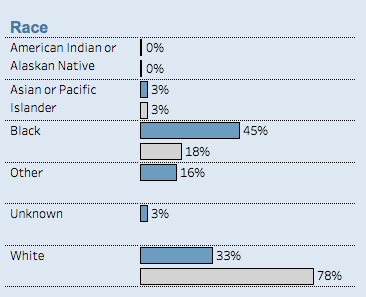New Dashboards Offer COVID Case Info on Ohio Kids
COLUMBUS, Ohio — New dashboards launched by the state this week report data on coronavirus cases in school districts across the state, as well as the overall population of children under the age of 18.
During his briefing on Thursday, Gov. Mike DeWine discussed the dashboards, which can be found at Coronavirus.ohio.gov under the COVID-19 dashboard. The new dashboards stem from the Sept. 3 order issued by the Ohio Department of Health establishing a reporting process for children’s cases.
For the schools dashboard, viewers can review the number of weekly cases in each county and break that information down further by school district. Data for each district includes new and cumulative cases for students and staff. Numbers are submitted by the school districts to their local health departments, who in turn provide them to the state health department.
Currently, the only school district in the Mahoning Valley to have reported cases is Columbiana Exempted Village, with two student cases.
“Because there’s a student who’s associated with a school who’s tested positive is no reflection of the teachers, the principal, the superintendent or anybody else,” DeWine said. “The school is going to reflect what is going on in the community.”
The children’s dashboard was created in consultation with the Ohio Children’s Hospital Association and includes information about cases, hospitalization and deaths.

As of Sept. 17, Mahoning County has the most reported cases in the Mahoning Valley of children under the age of 18 testing positive for the virus with 143. Trumbull County is second with 67 cases and Columbiana County reports 37.
Statewide, Mahoning County has the 11th most cases. Since March, there have been 9,040 total cumulative cases in the state, of which 223 were hospitalized, according to the dashboard. Only one child has died because of COVID-19.
“One of the more troubling statistics,” DeWine said, “is that Black children make up 45% of all hospitalized children” who have tested positive for COVID-19. However, they only account for 18% of the total population of Ohioans under the age of 18.
The data reflects the experience of children’s hospitals across the state, said Dr. Patty Manning, chief of staff at Cincinnati Children’s Hospital. While data show children aren’t as affected by COVID-19 as adults, they still do contract it, “and the data really reflects that,” she said.
“We have fairly consistent number of children positive with COVID, but fairly also consistently low numbers of children who are hospitalized or who are severely ill with COVID,” she said.
The data in the children’s dashboard will help children’s hospitals and pediatricians track and observe trends over time, which can only happen by tracking the data, she said.
Some of the trends doctors have already noticed include children who are more mobile and social are more likely to contract COVID-19, older children who have other health conditions could become more seriously ill with COVID-19 and some children who are COVID-19 positive may be asymptomatic.
However, after testing “thousands and thousands of children in Ohio before they go into surgery or have other procedures,” the percentage of children who are asymptomatic and have COVID-19 is “exceptionally low,” she said.
“It’s about 1%,” she said. “And so even though we know that children can be asymptomatic with COVID, the overwhelming majority of children who are walking around without symptoms do not have COVID.”
As children go back to school, the standard practices of wearing a facial covering, maintaining distance and practicing good hand hygiene, as well as keeping surfaces clean, is helping to keep kids safe, she said.
Manning advised parents to pay attention to the data gathered from their region and the different age groups of children to get a good idea on how things are trending in their community.
She also advised parents to consider getting flu shots for children six months and older.
“You really don’t want to be the parent of a child who experiences what it’s like to have a child who has flu and COVID,” she said. “We don’t want to learn what that is. We may have to learn that, but we shouldn’t have to learn that because a flu vaccine is so helpful and so preventative.”
Copyright 2024 The Business Journal, Youngstown, Ohio.



